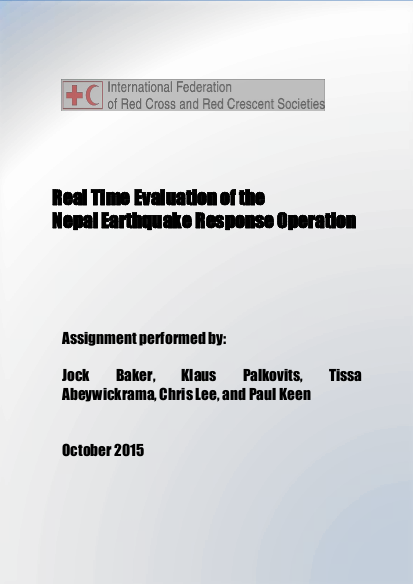
With its complex geophysical structure and vulnerability to a variety of disaster types, Nepal ranks as one of the most disaster-prone countries in the world. On 25 April 2015, a 7.8 magnitude earthquake struck Nepal, followed by a series of aftershocks including one with a magnitude of 7.3 on 12 May that occurred in the midst of ongoing relief operations. These combined events left behind more than 8,500 people dead, 17,600 injured, over 855,000 houses damaged or destroyed and have had far-reaching impacts on infrastructure, livelihoods and social services. This Real Time Evaluation (RTE) of the response by the International Federation of Red Cross and Red Crescent Societies (IFRC)1 to the Nepal earthquakes aimed to capture both lessons from the response that could improve the preparedness, response and accountability during disasters in the future while at the same time providing “real-time” guidance for the recovery phase. The RTE aimed to capture the perspective communities affected by the earthquake and how the application of the Principles and Rules for Red Cross and Red Crescent (RC) humanitarian assistance supported accountability and the delivery of assistance.